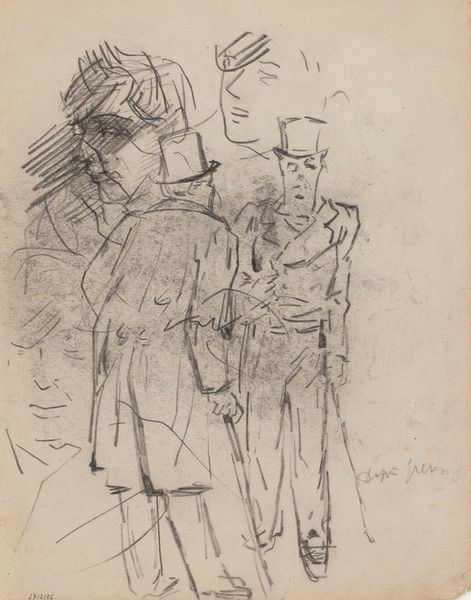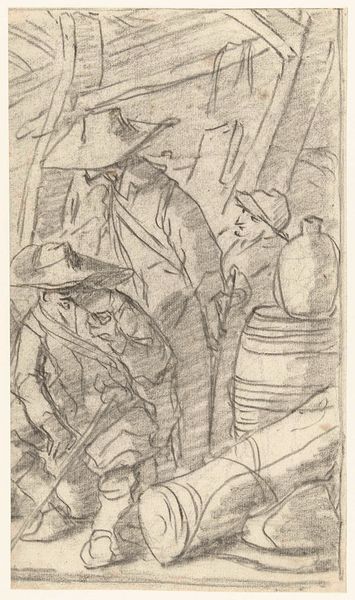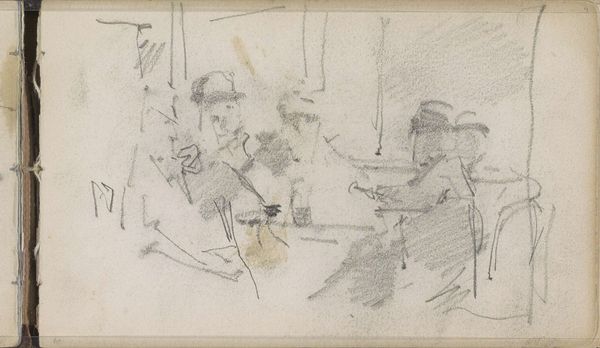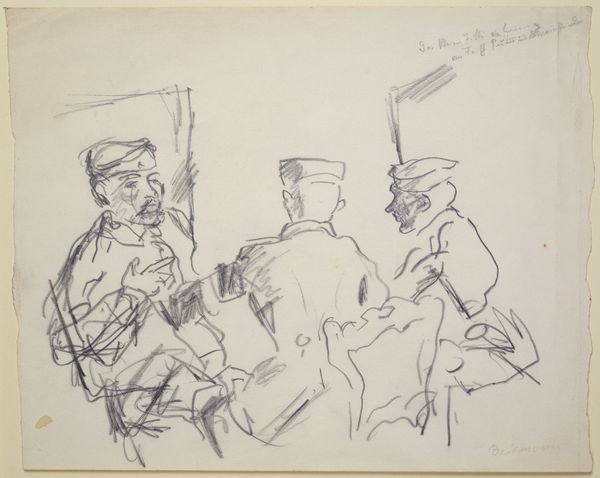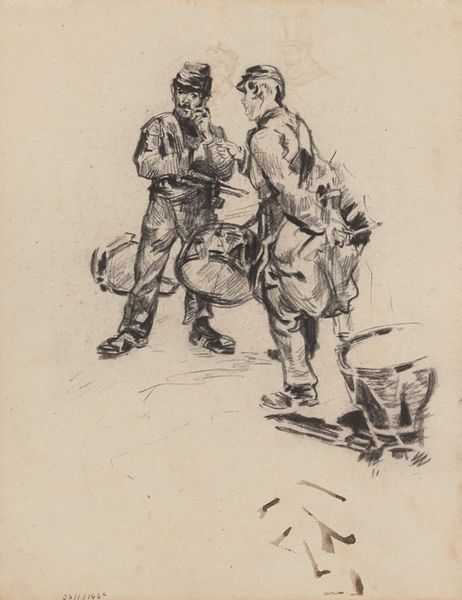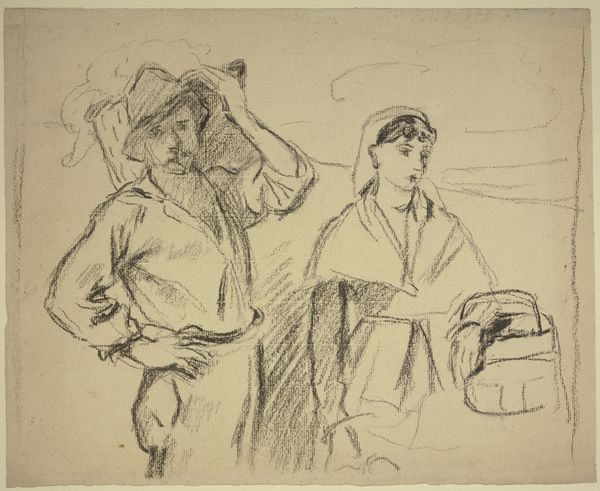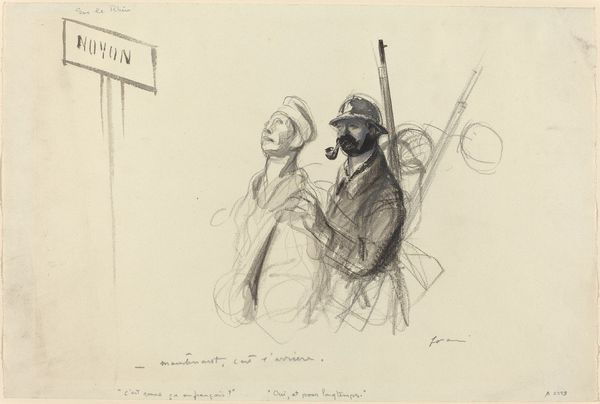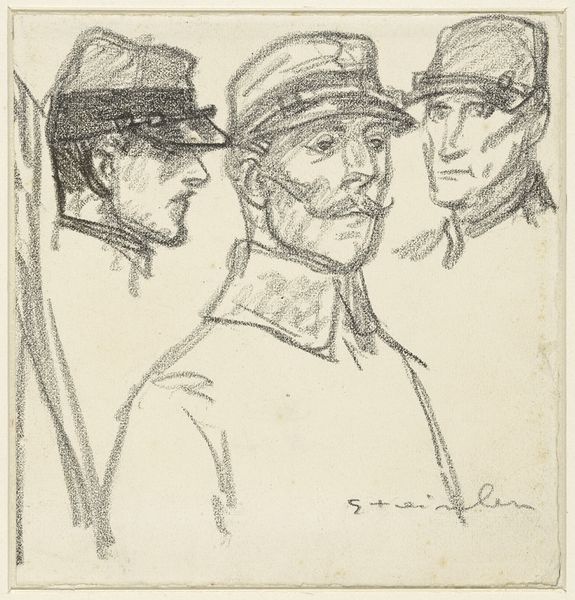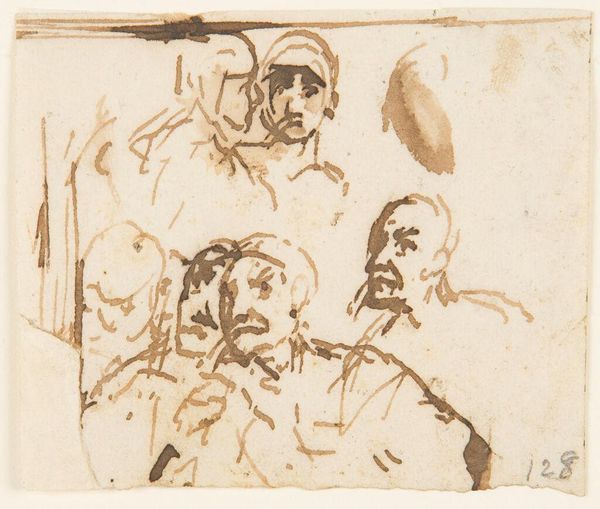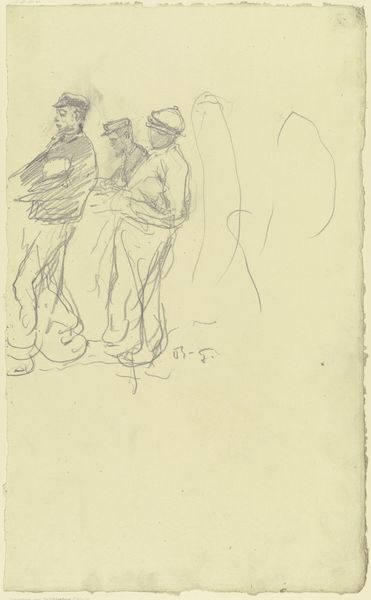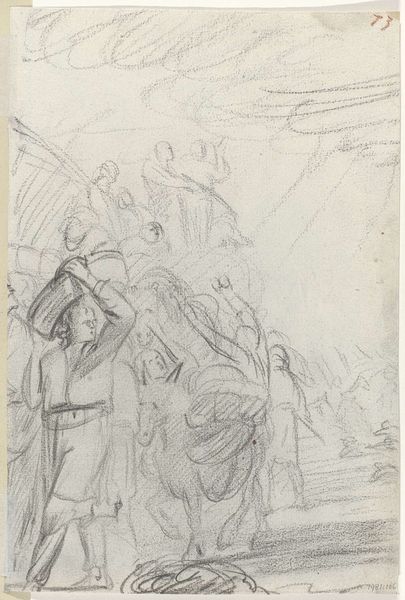
drawing, pencil
#
portrait
#
drawing
#
light pencil work
#
ink drawing
#
pen sketch
#
pencil sketch
#
incomplete sketchy
#
figuration
#
personal sketchbook
#
ink drawing experimentation
#
sketch
#
pen-ink sketch
#
pencil
#
expressionism
#
sketchbook drawing
#
sketchbook art
Copyright: Public domain
Editor: So, this drawing is titled "Croquis - Deux Poilus" by Théophile Alexandre Steinlen, created in 1916. It looks like it’s done with pencil or ink. It's quite rough and sketchy, and there’s a somber feel to it. What symbols or stories do you see in this piece? Curator: This work encapsulates a crucial moment of cultural memory, doesn't it? Look closely at those figures. The "poilu," the common French soldier of World War I, becomes a symbol here. Not just of a man, but of resilience, suffering, and national identity during immense crisis. Editor: I notice one soldier is smoking a pipe, the other a rose. Curator: Precisely! The pipe and the rose offer potent contrasts. The pipe represents perhaps a common comfort, a grounding ritual amidst chaos. The rose, what does that signify for you? Consider its traditional associations: love, beauty, but also transience. Doesn't it feel strikingly out of place? Editor: Yes! It’s almost jarring considering the context of war, like a fragile beauty persisting. Curator: Indeed. Think about the date, 1916. Verdun was raging. This juxtaposition forces us to consider themes of life and death, fleeting beauty against the backdrop of destruction. The artist uses these symbols to explore profound psychological impacts of war, doesn't he? What emotions do they evoke? Editor: Mostly sadness and a sense of loss, but also a flicker of hope that even amidst war, there’s a desire to retain some beauty. Curator: Exactly. It reveals a shared humanity enduring despite trauma. Consider the enduring symbolism, influencing even contemporary understandings of conflict and its effects on the individual and collective psyche. Editor: I see that now. Thanks for illuminating the historical and symbolic context! Curator: A powerful reminder of how visual language shapes our understanding. It enriches our appreciation and comprehension, doesn't it?
Comments
No comments
Be the first to comment and join the conversation on the ultimate creative platform.
